
Andy Lloyd's Dark Star Blog

Blog 74 (May 2019)
Searching for an Occult Planet
Scientists may be coming around to the idea that a direct detection of Planet X is just too difficult right now. It's been over three years since the publication of compelling indirect evidence for this body, re-branded as 'Planet Nine' (1). Since that time, I've reported upon the many attempts to both constrain the position of this object, and to ultimately directly observe it in either visible or infra-red light.
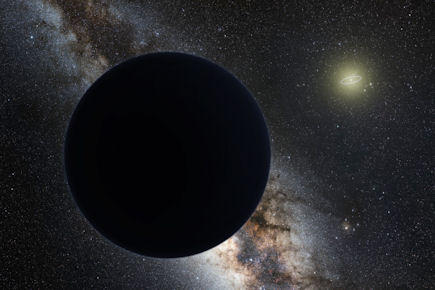
Image Credit: ESO
Long before Planet Nine had even seen the light of day, I was already contemplating why such a body had yet to be detected, despite all of the amassing evidence for its presence in the outer solar system. In early 2015, I came to the conclusion that it was essentially hidden from view - not by any weird alien technology, but simply by a localised dust cloud, or mini-nebula. This seemingly prosaic notion was based upon a logical argument: Planet X resides beyond the heliosphere, essentially in interstellar space. Dust-removal mechanisms out there are different to those within the heliospheric solar system. So, different rules apply, and for whatever reason that hasn't been taken into account in current modelling - particularly regarding large rogue planets. I called this idea the 'Shroud Hypothesis' (2).
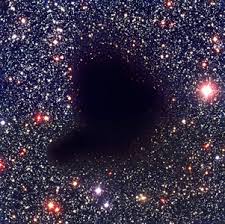
Image Credit: ESO
Despite my efforts to promulgate this hypothesis, scientists working on anything to do with Planet X seemed less than keen. Nonetheless, even without an accompanying dust cloud, Planet Nine is recognised as a challenging object to spot out there (my dust cloud would just make things a whole lot worse):
"Direct optical searches for Planet Nine in reflected sunlight are rendered difficult by the [fourth power] decrease in brightness with distance, and they become extremely challenging for [magnitude] > 23−24, especially in regions that are crowded with stars. Directed searches at infrared wavelengths for self-luminous trans-Neptunian planets are stymied by the detection limits of wide-field space-based surveys unless a planet exists that is much larger and much warmer than expected...in the case that a ninth planet does not exist, it is difficult to rule out its presence simply through the lack of a direct detection. Fortunately, however, indirect detection via the planet’s tidal gravity signature may be feasible." (3)
Dark nebulae are spotted when they block out background light by moving across a well-lit field of view (4). So, ironically, I would argue that finding planet X might be a back-to-front process where this dark object is seen to move across a well-lit field of background stars, occulting them. An occult planet, if you like.
In a similar vein - but this time using gravity effects instead of light - a team from Yale (3) have proposed putting together an 'occultation monitoring' network (cISP), or 'picket fence', of telescopes to detect Planet Nine - among other things:
"Occultation monitoring can be used to measure the accumulated effects of the tidal acceleration imparted by massive outer solar system objects, including Planet Nine... An accurate measurement of tidal acceleration must combine precise astrometry with a rigorous dynamical model of the full solar system to integrate the trajectories of occulting objects.
"Beyond increasing the likelihood that any individual occultation event is observable, a large number of telescopes also increases the likelihood that a single occultation event may be observable at multiple sites. Observations of a single occultation event by multiple telescopes provide tighter constraints upon the size of an individual object while also improving confidence in lowSNR occultation measurements." (3)
This network is only being considered at the moment, but a similar network was used with varying degrees of success to precisely determine the position of the Kuiper belt object 2014 MU
69 (known as 'Ultima Thule') prior to the New Horizon's flyby earlier this year.
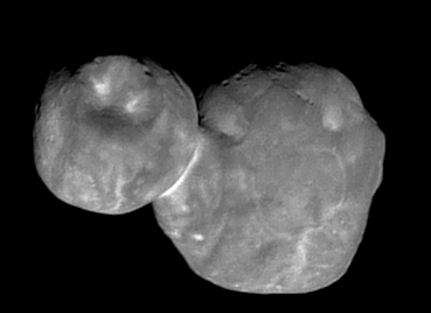
Image Credit: NASA/Johns Hopkins University Applied Physics Laboratory/Southwest Research Institute
(As a brief aside, a recent update by the New Horizons team (5) notes the lack of craters on the primordial Kuiper Belt Object 2014 MU
69 and argues that its relatively uncratered surface may point to a lack of small objects beyond Neptune, as well as a dusty Kuiper belt zone (6). If this analysis is correct, the dust would be slowing down what little collisional traffic exists out there, and limiting surface damage to KBOs. Even its own two lobes, "Ultima" and "Thule", came together in a 'gentle collision':"...much of the binary's orbital momentum must have dissipated for the objects to come together, but scientists don't yet know whether that was due to aerodynamic forces from gas in the ancient solar nebula, or if Ultima and Thule ejected other lobes that formed with them to dissipate energy and shrink their orbit.." (7)
If the flyby of Ultima Thule is raising questions about the environment immediately beyond Pluto, then I wonder how unexpected the interstellar environment will turn out to be beyond the heliosphere?)
Three years on from the Planet Nine announcement, hopes may be slowly fading among those hunting Planet X. However, as with all worthwhile endeavours, it is essential to persevere. After all, generations of astronomers have been seeking Planet X for well over 100 years. If it comes to fruition, the new method of occultation monitoring may offer hope that the Occult Planet will one day be found.
Written by Andy Lloyd, 17th-24th May 2019
References:
1) Konstantin Batygin & Michael Brown "Evidence for a Distant Giant Planet in the Solar System" The Astronomical Journal, 151:2, 20 January 2016,
2) Andy Lloyd "The Shroud Hypothesis" 12 January 2015
andylloyd.org/darkstarblog22.htm
3) Malena Rice & Gregory Laughlin "The Case for a Large-Scale Occultation Network" 15 May 2019, American Astronomical Society, AAS Meeting #233, id.302.02
4) Swinburne University Centre for Astrophysics and Supercomputing "Dark Nebula"
5) Alan Stern et al "Initial results from the New Horizons exploration of 2014 MU69, a small Kuiper Belt object" Science, 17 May 2019, Vol. 364, Issue 6441 sciencemag.org article
6) Leila Miller "Seven things we've learned about Ultima Thule, the farthest place visited by humans" Los Angeles Times 21 May 2019
7) NASA "NASA’s New Horizons Team Publishes First Kuiper Belt Flyby Science Results" 16 May 2019
The 'Wet' Inner Solar System
The Japanese spacecraft Hayabusa visited the asteroid 25143 Itokawa in 2005, and amazingly brought back samples to Earth for analysis. Itokawa's orbit around the sun crosses those of both Earth and Mars, making it a long-term denizen of the inner solar system. Its curious, varied terrain and lack of impact craters indicate it is a rubble pile asteroid, cobbled together from one original localised swarm of rocks, or two or more following a collision. It should be dry, but the analysis of the returned minerals has revealed that this is not the case, despite those same minerals generally being anhydrous in nature.
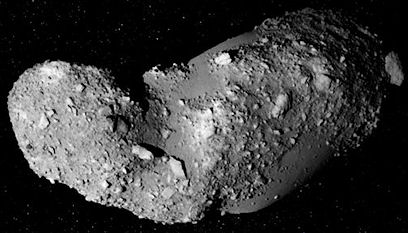
Image Credit: NASA/JPL
Moreover, the isotopic composition of the asteroid's water is the same as Earth's:
"Water is made from hydrogen and oxygen. But those elements occur as different isotopes – meaning they can have a different number of neutrons in their atomic nucleus (neutrons are particles that make up the nucleus together with protons). The researchers looked at the hydrogen isotopic composition of the water and discovered it was very close to that of Earth, suggesting the water on Earth has the same source as that of the Hayabusa grains." (1)
There are potential implications for theories relating to the origin of water on Earth, which seems overly abundant given its proximity to the Sun: Because it lies within the 'snowline', the early Earth should have lost much of its water to space during its formation. That, of course, should be the same for Near Earth Objects, like Itokawa. More so, actually. So, if this asteroid managed to hold onto water (2), then it seems reasonable to suppose that whatever mechanisms are at work there are true to the materials which eventually aggregated to form the Earth. Additionally, the hypothesis that it was asteroids, not comets, that delivered further tranches of wetness is bolstered by this finding.
This would also seem to help with the equally puzzling anomaly about Mars. its scant atmosphere is inadequate to support liquid water on its surface. Yet there is plenty of evidence emerging to suggest that water has flowed across the Martian surface in the past (and, potentially not that long ago). I cover plenty of this subject in my book 'Darker Stars' (3). Dry Earth and Wet Mars seem like adjacent babies on a maternity ward swapped at birth. Move them in either direction, and things get a lot more sensible. If Earth had started out nearer, or beyond, the snowline, then its relative abundance of water makes a whole bunch of sense. Astrophysicists don't seem keen on this possibility - it doesn't fit well with the currently accepted paradigm of the Nice model.
The likelihood that water is retained within the inner solar systems by all bodies certainly helps, but doesn't really explain the apparent existence of liquid water on the Martian surface (4). That calls for a much thicker atmosphere in the past, and more clement conditions generally. Again, move Mars inwards at some point in the past, and that situation improves. Mars' orbit is, after all, rather haphazard. Perhaps we don't know the half of it. The tableau we are presented with here may also be more readily explained by the intervention of another significant body, shaping and possibly re-shaping the inner solar system. Good old Planet X, of course. Again, not really on astrophysicists' agendas.
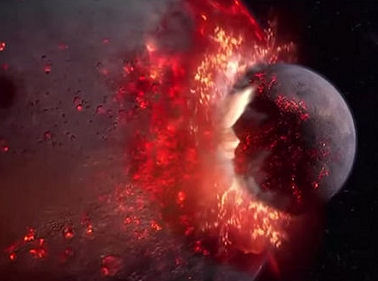
One related topic that is of interest to them is the possibility that the Earth's water was delivered by the planetary object that struck the Earth some 4.4 billion years ago, leading to the formation of the Moon. New research suggests that this object, named 'Theia', originated from the outer solar system (5). German scientists argue that the collision between proto-Earth and a outer solar system object provided sufficient carbonaceous material to account for the entire amount of water on Earth (6). It has to have arrived from beyond the solar system's snowline for this to work. Instead, I suggest that Earth itself originated (slightly) beyond the snowline and migrated inwards. I recognise that this is a very speculative comment. But I'm struck by the enormous planetary migrations within the Nice model. Even this 'Theia' emanates from the outer solar system.
Why should Earth's orbit be immutable?
Written by Andy Lloyd,
24th May 2019References:
1) Monica Grady "How did the Earth get its water? Asteroid sample gives a surprising answer" 2 May 2019 with thanks to John
2) Ziliang Jin & Maitrayee Bose "New clues to ancient water on Itokawa" Science Advances, 5(5), 1 May 2019:
3) Andy Lloyd "Darker Stars" Timeless Voyager Press 2019
4) Kaushik Mitra " Mars Used to Have Water, But We Can't Explain How: The Paradox of Water Stability on Early Mars" 7 May 2019
5) University of Münster "Formation of the moon brought water to Earth: New research explains how Earth became a habitable planet" 21 May 2019
6) Gerrit Budde, Christoph Burkhardt and Thorsten Kleine "Molybdenum isotopic evidence for the late accretion of outer Solar System material to Earth" Nature Astronomy, 20 May 2019,
Harry Truman and Zecharia Sitchin
There were many sides to the Planet X author Zecharia Sitchin. His fascinating alternative theories about Nibiru and the Anunnaki have often been derided as pseudoscience. They are, of course, simply one man's interpretation of ancient textual writings. What is often forgotten in the many efforts to debunk Sitchin's work is his scholarly capability. He had been a journalist for many years and, like many of his peers, delved deeply into subjects that he was not necessarily an accredited expert on. He was also a man of some influence.
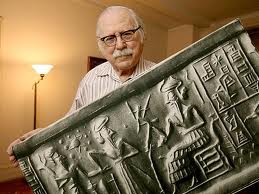
Image Credit: Zecharia Sitchin (public domain)
The Jerusalem Post reports that a rare document is now available to buy, which has emerged from the late Zecharia Sitchin's estate. Sitchin had noted that historic U.S. documents recognising the State of Israel had never actually been signed by the then-President Harry Truman. Truman had only ever signed a draft copy on 14th May 1948, which had included hand-written annotations. In 1965, Sitchin was president of the New York chapter of Hadassah and director of the American-Israel Chamber of Commerce and Industry, and met with Truman. He took the opportunity to literally put the record straight:
"“During a meeting with president Truman at the Library, I discussed with him the regretful fact of the absence of a signed Document of Recognition,” Sitchin wrote in a 1987 letter to the Israeli Embassy in Washington. “On his instructions a photocopy was made of the clean, final statement and he signed it then and there. This signed Document of Recognition – the only one in existence – was then displayed in the [World’s Fair] Pavilion and has remained in my possession.”" (1)
The unsigned 1948 document may have had some context. In a 'secret' diary unearthed in the President's library in 2003, entries made by President Truman on 21st July 1947 were critical of the attitudes of Jews as 'displaced persons' (2), leading to accusations against Truman of anti-Semitism (3).

Image Credit: Harry S. Truman Presidential Library & Museum (4)
Sitchin's intervention, then, was all the more important. It confirmed Truman's personal commitment to the supportive declaration issued by his office to the press back in 1948. It also indicates how the late Zecharia Sitchin was a serious player, despite the mistaken reputation that is often afforded him.
Written by Andy Lloyd,
10th May 2019References:
1) Amy Spiro "Truman-signed Recognition of Israel up for Sale" 3 May 2019 with thanks to John
2) President Harry S. Truman's 1947 Diary Book - 1947 Diary and Manual of the Real Estate Board of New York, Inc. (Note: This document no longer seems to be publicly available through the Truman Library record):
trumanlibrary.org/diary/transcript.htm
3) Rupert Cornwell "Truman diary reveals anti-Semitism and offer to step down" The Independent 12 July 2003
4) Harry S. Truman Presidential Library & Museum "Creation of the State of Israel, 1948"
'Darker Stars' now available on Kindle!
'Darker Stars' mixes the latest cutting-edge science about the outer solar system with reasoned arguments and adventurous speculation.

It explores anomalies among the planets and seeks to understand them through considering past catastrophes and orbital fluctuations. The work of a great many scientists is drawn into the debate to inform and challenge. In turn, it challenges many of their own assumptions, treading a path on the very limits of orthodoxy.
There are over 100 colour images in the Kindle book, substantially enhancing its presentation and enjoyment.You can order your copy for $18.92 through Amazon.com here:
If you live in the UK you can obtain your Kindle copy for £14.47 here:
Video and Radio Interviews

On Friday 17th May, Project Camelot
recorded a live interview with me about my new book
![]() Darker Stars: New Evidence over Skype. I was interviewed by Kerry Cassidy.
Darker Stars: New Evidence over Skype. I was interviewed by Kerry Cassidy.

You can keep informed of updates by following me on Twitter:
![]()
Or like my Facebook Page: https://www.facebook.com/darkstarandylloyd